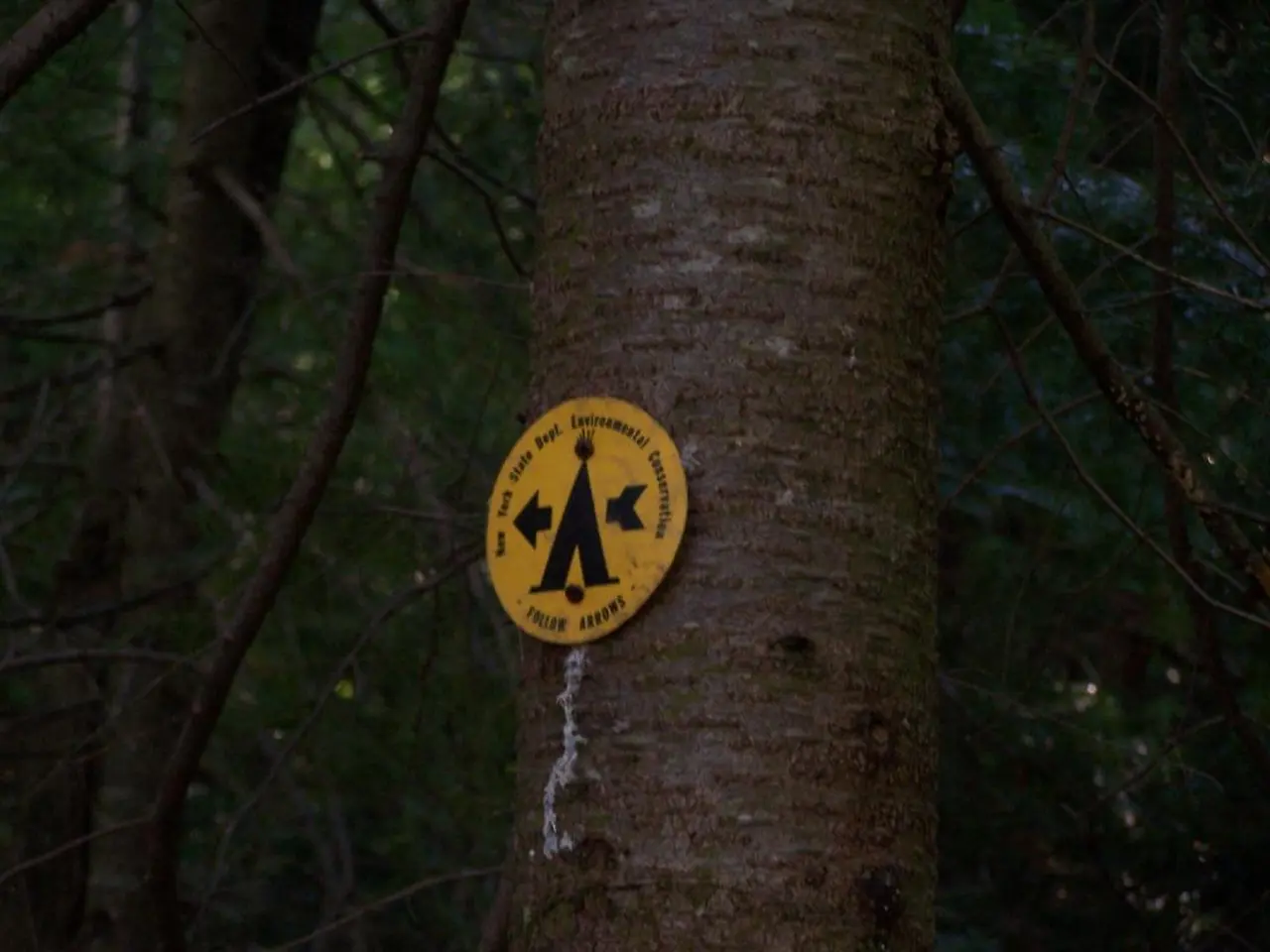Insurance Models Failing to Account for Nature's Economic Worth: Understanding the Trillion-Dollar Omission
The insurance industry is embracing a new approach to mitigate financial exposure to environmental risks: nature-based solutions (NbS). By incorporating these strategies into their practices, insurers aim to lower the frequency and severity of natural disasters, benefiting both insurers and policyholders.
Reducing Risk at the Source
Nature-based solutions, such as wetlands restoration, tree planting, or reef protection, function as natural buffers against floods, heatwaves, and storms. By mitigating hazard impacts, they reduce vulnerability and physical exposure to natural catastrophes, thereby cutting down expected insurance claims and losses [1][3][4].
Maintaining Insurability
As environmental risks grow with climate change, insurance becomes more expensive or unavailable in high-risk areas. Investing in NbS lowers these risks enough to maintain market stability and preserve insurability, helping insurers continue providing coverage to vulnerable communities and businesses [1][3].
Incentivizing Prevention and Resilience
Insurance underwriting based on risk reduction encourages policyholders to adopt NbS and other prevention measures, granting premium discounts or risk advisory services that further reinforce resilience [4].
Aligning Financial and Environmental Goals
By integrating NbS, insurers and investors support sustainable economies and ecosystems, which is essential for a stable financial system. This integration helps steer societies towards sustainability and long-term climate resilience, benefiting insurers and communities alike [2].
Addressing Equity and Ecosystem Legitimacy
Emerging discourse highlights the need to factor nature itself as a stakeholder in insurance designs, ensuring that ecosystems’ roles and claims are recognized within climate adaptation and insurance frameworks, thereby promoting just and durable solutions [5].
Overcoming Obstacles and Demonstrating Success
Policy frameworks often work against nature-based risk reduction, such as the National Flood Insurance Program in the U.S. that has underpriced flood coverage for decades. Regulators in California and Colorado are starting to factor landscape-scale mitigation into insurance oversight, including ecological interventions [6].
Demonstrated examples of nature's risk-reduction value include levee setbacks in the Missouri River that reduce damage and create vital habitat, and a community-wide ecological forestry initiative in California's Sierra Nevada that led to a lower wildfire threat and a dramatic drop in insurance premiums and deductibles [7].
The Future of Nature-Positive Insurance
Wetlands, mangroves, and forests can absorb floodwaters, blunt storm surge, and mitigate wildfire spread, but their protective value remains invisible in most underwriting and pricing. Investor coalitions like Nature Action 100 are urging insurers to align their portfolios with biodiversity targets [8].
A recent study found that coastal wetlands in Florida reduce the frequency of flood insurance claims from lower severity storms that are responsible for around 40% of all flood claims [9]. The Environmental Defense Fund (EDF) has published a report titled "Nature for Insurance and Insurance for Nature" that highlights the potential of ecosystems to reduce disaster risks and stabilize insurance markets [10].
A Pathway to More Just, Resilient Systems
Without deliberate effort, nature-positive insurance could deepen inequity, but when designed with inclusion in mind, it offers a pathway to more just, resilient systems. Talley Burley, climate risk and insurance manager at EDF, states that the insurance industry is still learning about how nature can minimize climate risk to communities [11].
[1] Environmental Defense Fund. (2021). Nature for Insurance and Insurance for Nature. Retrieved from https://www.edf.org/publications/nature-for-insurance-and-insurance-for-nature
[2] Nature Sustainability. (2021). Integrating nature-based solutions into insurance practices. Retrieved from https://www.nature.com/articles/s41893-021-00775-y
[3] World Wildlife Fund. (2021). Nature-based solutions: Insurance for a resilient world. Retrieved from https://www.worldwildlife.org/magazine/issues/summer-2021/articles/nature-based-solutions-insurance-for-a-resilient-world
[4] Munich Re. (2021). Nature-based solutions in reinsurance. Retrieved from https://www.munichre.com/en/about-munichre/sustainability/topics/nature-based-solutions-in-reinsurance.html
[5] Nature Sustainability. (2021). Nature as a stakeholder in insurance design. Retrieved from https://www.nature.com/articles/s41893-021-00776-x
[6] Insurance Journal. (2021). California Regulators to Factor Landscape-Scale Mitigation into Insurance Oversight. Retrieved from https://www.insurancejournal.com/news/west/2021/02/26/645944.htm
[7] Environmental Defense Fund. (2021). Restoring California's Forests: A Path to Resilience. Retrieved from https://www.edf.org/publications/restoring-californias-forests-path-resilience
[8] Nature Action 100. (2021). Nature Action 100. Retrieved from https://www.natureaction100.com/
[9] University of Florida. (2021). Wetlands Reduce Flood Insurance Claims in Florida. Retrieved from https://www.ufl.edu/news/2021/02/17/wetlands-reduce-flood-insurance-claims-in-florida
[10] Environmental Defense Fund. (2021). Nature for Insurance and Insurance for Nature. Retrieved from https://www.edf.org/publications/nature-for-insurance-and-insurance-for-nature
[11] Environmental Defense Fund. (2021). Climate Risk and Insurance Manager. Retrieved from https://www.edf.org/about/staff/talley-burley
- The use of science in environmental-science research is crucial for identifying effective nature-based solutions, such as wetlands restoration or tree planting, that can mitigate climate-change risks like wildfires and storms by enhancing resilience and reducing systemic risk.
- By integrating nature-based solutions into business practices, the finance sector, particularly insurance, can contribute to a more sustainable future by aligning their goals with environmental defense fund initiatives aimed at preserving biodiversity, maintaining insurability, and promoting nature-positive insurance.
- Incentivizing the adoption of nature-based solutions through underwriting practices can help mitigate climate-change impacts on businesses and communities, thus demonstrating the significant role of these solutions in reducing the impacts of natural disasters on our economy and financial system.




